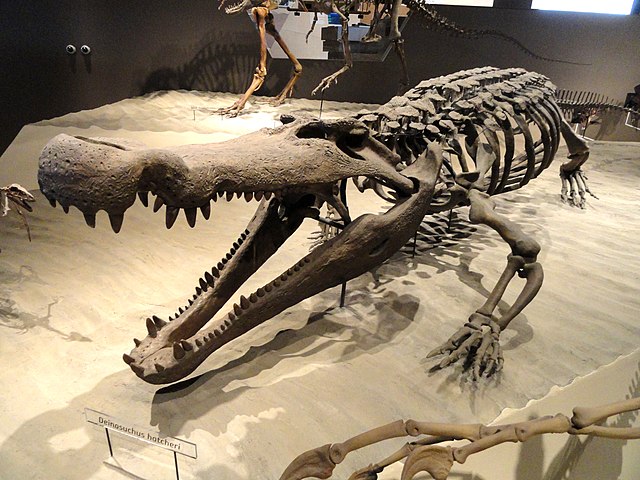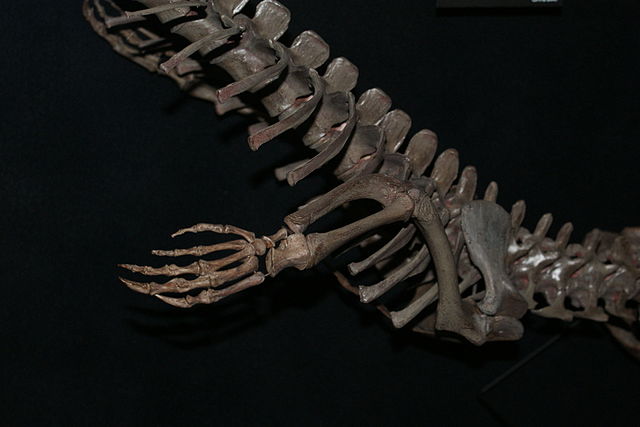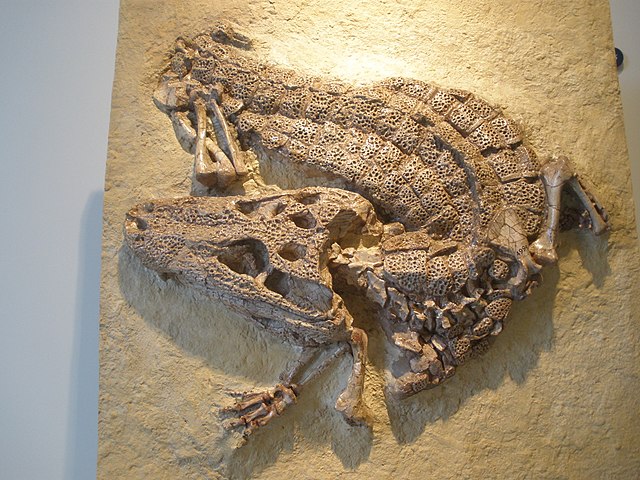Deinosuchus is an extinct genus of alligatoroid crocodilian, related to modern alligators and caimans, that lived 82 to 73 million years ago (Ma), during the late Cretaceous period. The name translates as "terrible crocodile" and is derived from the Greek deinos (δεινός), "terrible", and soukhos (σοῦχος), "crocodile". The first remains were discovered in North Carolina in the 1850s; the genus was named and described in 1909. Additional fragments were discovered in the 1940s and were later incorporated into an influential, though inaccurate, skull reconstruction at the American Museum of Natural History. Knowledge of Deinosuchus remains incomplete, but better cranial material found in recent years has expanded scientific understanding of this massive predator.
Deinosuchus
Deinosuchus scutes and vertebra, Carnegie Museum of Natural History
Deinosuchus may have preyed upon large ornithopods. Kritosaurus lived alongside the giant crocodilian in the Aguja Formation ecosystem.
Reconstructed skull of D. riograndensis, Museo de la Evolución de Puebla
Alligatoroidea is one of three superfamilies of crocodylians, the other two being Crocodyloidea and Gavialoidea. Alligatoroidea evolved in the Late Cretaceous period, and consists of the alligators and caimans, as well as extinct members more closely related to the alligators than the two other groups.
Alligatoroidea
An alligator nest at Everglades National Park, Florida, United States
A. olseni fore limb
Alligator prenasalis fossil








